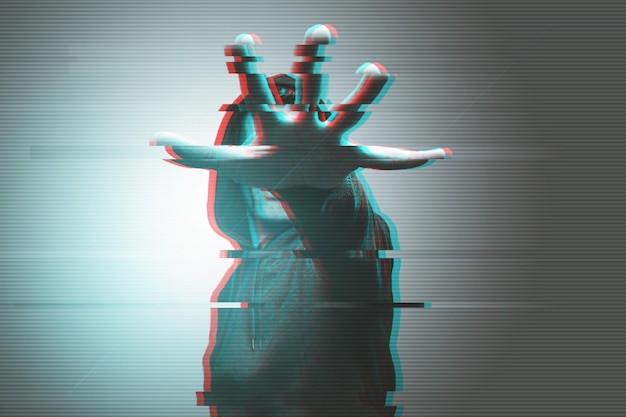Deepfakes: Harmless Fun or a Serious Threat? The Great Debate

Deepfakes spark a significant debate, questioning whether they are simply harmless fun, offering creative possibilities, or a serious threat, raising concerns about misinformation and potential misuse.
The rise of deepfake technology has ignited a global conversation: The Great Debate: Are Deepfakes a Threat or Just Harmless Fun? It’s a question that balances entertainment with ethical concerns, and creativity with potential manipulation.
Understanding Deepfakes: The Basics
Deepfakes, at their core, are a product of advanced artificial intelligence. These digitally altered videos or audio recordings convincingly depict someone saying or doing something they never actually did. But how is this possible?
The Technology Behind Deepfakes
Deepfakes are typically created using a type of AI called deep learning. This involves training a neural network on a vast dataset of images and videos of a particular person. The AI learns to mimic their facial expressions, voice, and mannerisms.
- Generative Adversarial Networks (GANs): Often used in deepfake creation, GANs involve two neural networks competing against each other. One network generates fake content, while the other tries to distinguish it from real content. This competition leads to increasingly realistic deepfakes.
- Facial Mapping and Replacement: Deepfake software maps facial features from a source video onto a target video, seamlessly replacing the original face with the new one.
- Voice Cloning: AI can be used to clone a person’s voice by analyzing audio recordings. This cloned voice can then be used to make the person say things they never actually said.
The potential applications of this technology, both positive and negative, are vast and continue to evolve as the technology becomes more sophisticated.

In essence, deepfakes showcase the rapidly advancing capabilities of AI and digital manipulation.
The Harmless Fun Side: Deepfakes for Entertainment
While the term “deepfake” often carries a negative connotation, it’s important to acknowledge the lighter side of this technology. Deepfakes can be used for entertainment purposes, offering creative possibilities in film, gaming, and social media.
Deepfakes in Film and TV
Deepfakes can resurrect deceased actors for new roles or de-age existing actors. Imagine seeing a young Marlon Brando in a modern film or watching a show where actors seamlessly transform into different characters using deepfake technology.
Deepfakes in Social Media and Online Humor
Many deepfakes are created simply for fun. Users create humorous videos of celebrities or politicians saying silly things, often as a form of satire or parody. These deepfakes can be a source of entertainment and amusement.
- Face-Swapping Apps: Many apps allow users to easily swap their faces with those of celebrities or friends, creating amusing and shareable content.
- Satirical Videos: Deepfakes can be used to create satirical videos that comment on current events or poke fun at public figures.
- Creative Expression: Some artists use deepfakes as a form of creative expression, creating surreal and thought-provoking videos.
However, it’s crucial to distinguish between harmless entertainment and malicious use. The line can be blurred, and that’s where the ethical concerns arise.
Ultimately, deepfakes offer a new avenue for creativity and entertainment, but awareness and responsible use are key.
The Dark Side: Deepfakes as a Tool for Misinformation
The potential for misuse is a major concern in the deepfake debate. Deepfakes can be used to spread misinformation, manipulate public opinion, and damage reputations.
Political Manipulation
Imagine a deepfake video of a political candidate making inflammatory statements or engaging in illegal activities. Such a video could influence an election or damage a candidate’s credibility irreparably.
Financial Fraud
Deepfakes can be used for financial fraud by impersonating CEOs or other high-ranking officials. These deepfakes could be used to authorize fraudulent transactions or steal sensitive information.
Reputation Damage and Cyberbullying
Deepfakes can be used to create damaging videos of individuals, including private citizens. These videos can be used for cyberbullying, harassment, and revenge porn, causing significant emotional distress and reputational harm.

The consequences of this kind of abuse can be devastating, highlighting the urgent need for countermeasures and public awareness.
Detecting Deepfakes: Can We Tell the Difference?
As deepfakes become increasingly sophisticated, it’s becoming more difficult to distinguish them from real videos. However, there are some telltale signs that can help identify a deepfake.
Technical Clues
Technical analysis can reveal inconsistencies in lighting, skin texture, and blinking patterns. AI-powered detection tools are being developed to analyze videos and identify these anomalies.
Contextual Analysis
Examining the source of the video, the context in which it was shared, and the overall narrative can provide clues about its authenticity. Fact-checking and cross-referencing information are essential.
- Anomalies in Lighting and Shadows: Deepfakes may exhibit inconsistent lighting or unnatural shadows on the face.
- Inconsistent Blinking: Deepfake algorithms sometimes struggle to accurately replicate blinking patterns.
- Poor Audio Quality: The audio in a deepfake video may sound unnatural or distorted.
Staying informed about these methods is crucial in the fight against deepfake-driven misinformation.
Detecting deepfakes is an ongoing challenge, requiring a combination of technical expertise and critical thinking.
The Legal and Ethical Landscape of Deepfakes
The rise of deepfakes has raised important legal and ethical questions. Are deepfakes a form of defamation? Do they violate privacy rights? These are complex issues that lawmakers and ethicists are grappling with.
Legal Regulations
Some countries and states have passed laws specifically targeting deepfakes. These laws aim to criminalize the creation and distribution of deepfakes that are intended to cause harm or manipulate elections.
Ethical Considerations
The creation and distribution of deepfakes raise ethical concerns about consent, privacy, and the potential for harm. Even deepfakes created for entertainment purposes should be labeled as such to avoid confusion and deception.
The debate on these nuances will continue as the technology evolves.
- Consent: Creating a deepfake of someone without their consent is unethical and potentially illegal.
- Transparency: Deepfakes should be clearly labeled as such to avoid misleading viewers.
- Responsibility: Creators of deepfakes should be held responsible for any harm caused by their creations.
The legal and ethical landscape surrounding deepfakes is complex and constantly evolving, creating new challenges for society.
Combating Deepfakes: What Can Be Done?
Combating the spread of deepfakes requires a multi-pronged approach, involving technology, education, and policy.
Technological Solutions
AI-powered detection tools are being developed to identify deepfakes. Blockchain technology can be used to verify the authenticity of videos and audio recordings.
Media Literacy and Education
Educating the public about deepfakes and how to identify them is crucial. Media literacy programs can help people develop critical thinking skills and become more discerning consumers of information.
Ultimately, a combination of technological solutions, media literacy, and proactive policies is needed to mitigate the risks posed by deepfakes.
- Develop AI Detection Tools: Invest in research and development of AI-powered tools that can automatically detect deepfakes.
- Promote Media Literacy: Educate the public about deepfakes and how to identify them.
- Implement Watermarking Techniques: Use watermarks or other identifying markers to verify the authenticity of videos and audio recordings.
| Key Point | Brief Description |
|---|---|
| 🎭 Entertainment | Deepfakes offer creative avenues in film, TV, and social media for harmless fun. |
| ⚠️ Misinformation | Deepfakes can be used for political manipulation, fraud, and reputation damage. |
| 🕵️ Detection | Technical and contextual analysis can help identify deepfakes, but it’s increasingly challenging. |
| ⚖️ Legal & Ethical | Laws and ethics are evolving to address deepfake issues, focusing on consent and transparency. |
Frequently Asked Questions
▼
A deepfake is a digitally manipulated video or audio recording that convincingly portrays someone saying or doing something they never actually did, created using AI.
▼
Deepfakes are typically created using deep learning techniques, where AI is trained on vast datasets of images and videos to mimic a person’s features and voice.
▼
Deepfakes can be used to spread misinformation, manipulate public opinion, commit fraud, and damage reputations, leading to emotional distress and societal harm.
▼
Yes, deepfakes can sometimes be detected through technical analysis (looking for inconsistencies) and contextual analysis (examining the source and narrative), though detection is becoming more challenging.
▼
Efforts to combat deepfakes include developing AI detection tools, promoting media literacy, and implementing legal regulations to address the misuse and harm caused by deepfakes.
Conclusion
In the end, the great debate: are deepfakes a threat or just harmless fun? remains complex. While they offer creative opportunities, the potential for misuse is undeniable. A balanced approach that combines technological solutions, public awareness, and ethical guidelines is essential to navigate this evolving landscape responsibly.
